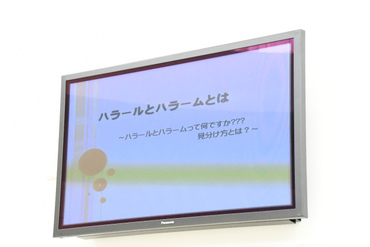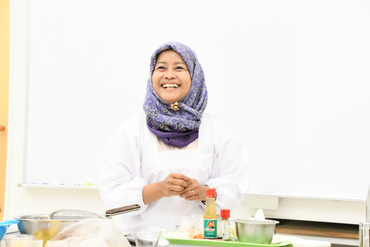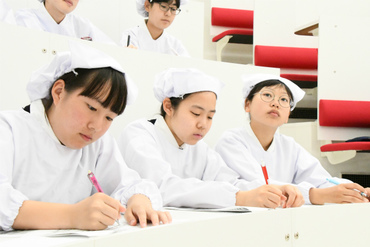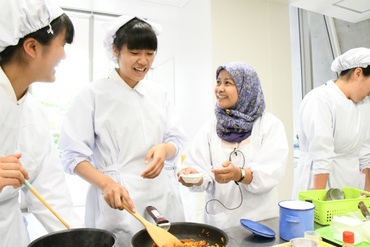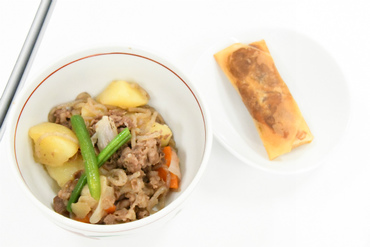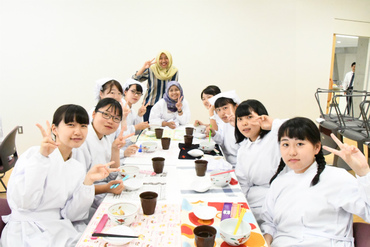多文化共生の第一歩「ハラル・ハラムについて学ぼう」/ Opening Our Eyes with the Example of Muslim Food Culture
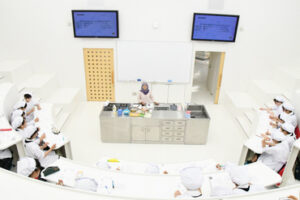
平成30年6月9日(土)、今年度も高校2年SGクラスではハラル調理実習を行いました。講師にヘルミンダワテイ氏を迎え、ハラルフードを使用して肉じゃがと春巻きを作りました。ほとんどの生徒がハラルフードを初めて使用するということで興味津々でした。ハラルフードとは、イスラム教の教えで食べてもよいとされている食べ物です。細かい決まり事がたくさんあるのでそれらをすべて覚えるのは難しいので「ハラル(許されているもの)」ではなく「ハラム(禁じられているもの)」は何かを判断できるようにとわかりやすく教えていただきました。
また「他の宗教の方と一緒に食事をすることをどう感じますか。」「もし間違ってハラムを食べてしまったときはどうしますか。」など生徒からも活発に質問が出ていました。現在、世界に16億人以上のイスラム教徒がいるとされています。東京オリンピックを前に今後イスラム教徒の観光客が急増することが予想されます。世界の食に関心を向け、私たちも対応していく必要があるようです。
On June 9th, we had a special lesson on Food and Society for the 11th Grade SG students. We invited Ms. Helmindawati Ishibashi as a guest lecturer. This was her third visit to Nakamura to teach students about Islam, Muslim life in Fukuoka, and–of course–Halal cooking. Our students showed great interest in the lecture. Halal refers to what is permissible or lawful in traditional Islamic law while the antonym to halal is haram, which means unlawful or forbidden.
After the lecture, students came up with many thoughtful questions about Islamic food culture. Students asked things like “What do you think of having meals together with people of other religions?” and “What happens when you eat haram food mistakenly?” Ms.Ishibashi gave examples from her daily life in which she explained how Muslims deal with such situations. It was an interesting and entertaining talk for everyone.
With the Tokyo Olympics fast approaching, Japan must prepare to welcome more and more foreign tourists. This special lesson reminded us the importance of understanding other food cultures from around the world in order to be better hosts for our visitors.



